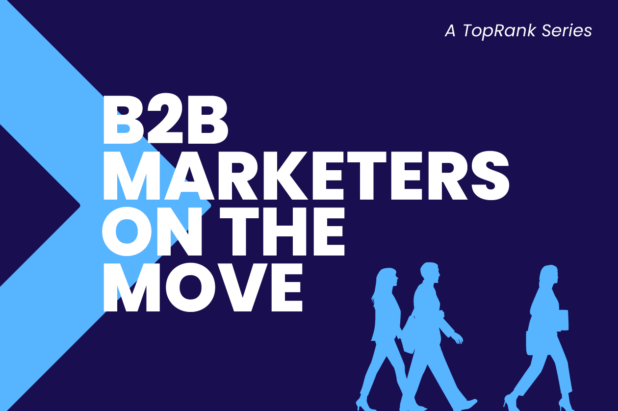
Kipp Bodnar of HubSpot
This post is one of a series of liveblogs from the 2010 MIMA Summit.
B2B social media can be surprisingly successful with a specific focus on lead generation. If social media is to be taken seriously for B2B by marketing decision makers, it needs to maintain a focus on business objectives and driving sales vs. “fluff”.
B2B companies are actually in a much better position to use social media as a marketing channel than B2C companies. They often have a much clearer expectation for what a customer does and what they want.
B2B companies also have deep internal expertise. It’s not uncommon for top B2B companies to employ thought leaders in their specific industry. However, there’s a solid argument that for many B2B companies, online marketing and social media might not be a fit.
Instances where social media doesn’t make sense:
- If you have a tiny customer base (perhaps you have only 5 customers).
- If the people you are trying to talk to can’t access the internet. Many people in regulated industries can’t access the outside internet from work. (i.e., some military/electric industry).
- If you or your business don’t have an advocate that can help you.
- Velocity and volume – tough for social media in the beginning. You can potentially create quick velocity but quick volume would be difficult.
- If you have a lack of resources you shouldn’t engage in social media. This seems like a big pain point for organizations. If you lack the time or resources it makes it difficult to be successful.
It’s important to classify what exactly a lead is. According to Kip, a lead is when somebody expresses clear interest in working with your business. If someone downloaded a whitepaper and gave full contact information, Kip classifies that as a lead.
Before anything else, it’s important to have the basics in place. If the website isn’t usable and there are no landing pages to collect lead information, social media is going to have much less of an impact because the traffic won’t engage and convert with your content.
Content to build leads for B2B Online Marketing
Content is the building block for all online marketing as a B2B company. Companies need to know how to talk to prospects in a way that is not promotional, solves their problems and provides value to them.
More content, in general, equals more entry points which should lead to increased leads. Content creation correlates to organic lead growth. One way to attain conversions is to ensure there are calls to action alongside content.
Leads stem from multiple social channels depending on industry and strategy. Discovering where your audience is matters. Remember that engagement is not a goal, it’s something you do which helps facilitate a goal and should be measured as a KPI, not an outcome.
Blogging has been critical as it is a platform to create and publish content throughout many different networks and attract new visitors.
Headlines win – never before in history have we had so much information. People are subscribing to blogs via email, Twitter LinkedIn, RSS, etc and headlines are the main call to action for content. They’re the make-or-break detail if people read content or not. HubSpot has found many of their most successful article headlines have numbers in them because people know they’ll be scanable.
Always optimize content with keywords so that you’re gaining additional organic visitors from search engines.
Social media and lead generation
CTAs (Calls to Action) – With a business blog, there are many different ways to get people to become a “lead” from a visitor. For example: including buttons in the sidebar to talk to a representative, or text links within content to whitepaper landing pages or to download content. HubSpot has found it successful to add calls to action at the end of content.
We have found that a majority of posts generating leads haven’t been published recently. Older content is generating leads.
It’s important to remember that your customers are more important than you are. For example, HubSpot has a customer in Virginia that installs pools and spas. All he does is share what someone might want to know when installing a pool. He doesn’t directly sell his products, but that’s okay. Even if people aren’t ready to buy, publishing value added content adds them into that consideration section.
Getting all team members involved in the business blog is vital. People want content from people, not necessarily just companies. Getting different people from different departments – i.e., research or product, allows marketers to expand the relevant information covered on a given blog to appeal to a larger subset of customers.
Business blogging drives leads and serves as a hub for search and social media visitors. It doesn’t feel like they are visiting a website that hasn’t been updated in years. A blog provides much better context for a business.
According to HubSpot’s research of its own customers, B2B is lagging behind B2C in terms of direct customer acquisition in social channels. B2B is only winning in one tool: LinkedIn, which makes sense. B2B organizations are acquiring customers through social channels, just not at the same rates as B2C.
Key tips and takeaways for B2B Social Media Marketing:
- Email is the ultimate testing ground for social media because for most of those getting started in social media, email is the largest sample. Email is not being replaced by social. You can use it as a testing ground to amplify the success of other marketing campaigns.
- The CRM tool is essential to tracking. Look at how a lead comes in, how it was converted and how it goes through the sales process. By having your sales system and CRM tied in with analytics, it gives a clearer picture from visit to lead, which is essential to tracking.
- Lead source – It’s important to understand what leads you get from different online channels to identify what sources are effective or not.
- Measurement – With analytics in place to measure and provide insight around lead sources, you can figure out where to allocate budget, especially if you can measure from visit to customer.
- Social + CRM is how you should think about ROI. If you can have your web analytics and your CRM talking, you can have an understanding of how people are coming to your site and how different channels are performing to you, measuring it down to the customer level.
- Acquisition cost reduction: Social media can equal more engaged and lower cost customers.
Thanks to Kipp Bodnar for presenting the above session during the 2010 MIMA Summit. Kipp leads the content marketing team at HubSpot and writes for the Social Media B2B blog.


